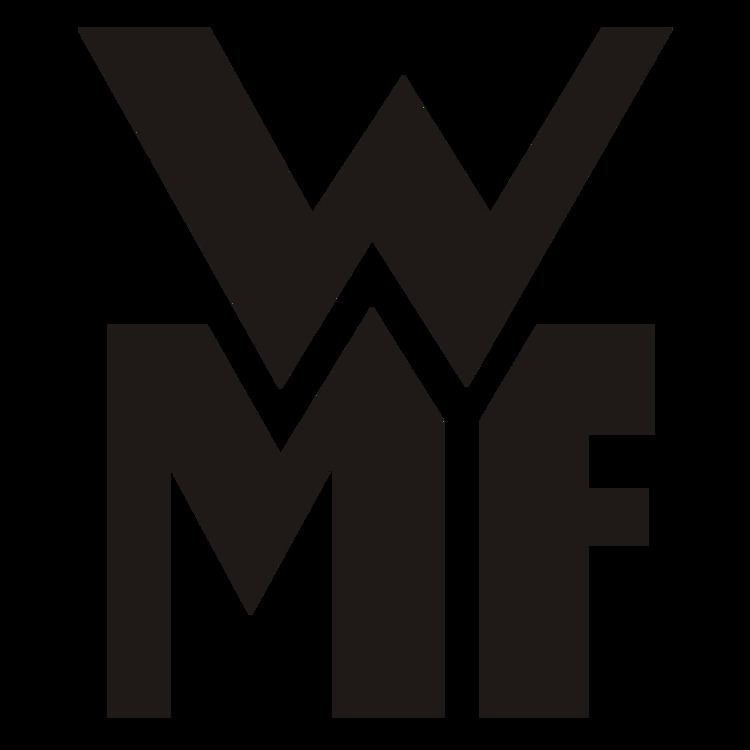Type GmbH Predecessor Straub & Schweizer Revenue 1.061 billion EUR (2015) Founder Daniel Straub, Schweizer | Website wmf.comwmf-group.com Number of employees 5,685 (2014) | |
 | ||
Key people Peter Feld (CEO)Bernd Stoeppel (CEO) Subsidiaries Schaerer Ltd, proLOG-brand logistics GmbH Profiles | ||
WMF Group (formerly known as "Württembergische Metallwarenfabrik") is a German tableware manufacturer, founded in 1853 in Geislingen an der Steige.
Contents
History
WMF was originally called Metallwarenfabrik Straub & Schweizer and was opened as a metal repairing workshop. Through mergers and acquisitions, by 1900 they were the world's largest producer and exporter of household metalware, mainly in the Jugendstil, or Art Nouveau style, designed in the WMF Art Studio under Albert Mayer, sculptor and designer, who was director from 1884 to 1914.
In 1880 after Metallwarenfabrik Straub & Schweizer merged with another German company, it was renamed as the Württembergische Metallwarenfabrik. WMF acquired the Polish metalware factory Plewkiewicz in Warsaw in 1886, which then became a subsidiary of WMF around 1900. During this period, the WMF employed over 3500 people. In 1890 they acquired the Kunstanstalt für Galvanoplastik München, which specialized in electrotyping and electroforming of statues and statuettes for buildings, fountains, tombstones, and gardens; this became the Abteilung für Galvanoplastik (Galvanoplastic Division) of WMF. During the 1920s, Abteilung für Galvanoplastik was producing reproductions of large-scale Italian Renaissance bronze works for an American clientele. Albert Weiblen Marble & Granite Co., Inc. of New Orleans pursued the acquisition of a gilt copper reproduction of Ghiberti's "Gates of Paradise". In 1910, the Reale Istituto di Belle Arti had granted WMF the exclusive right to take a sharp cast of the original doors, from which WMF created a reproduction that was exhibited at the International Building Trades Exhibition in Leipzig (1913). WMF produced a trilingual catalog about the doors, titled Erztüre des Hauptportals am Baptisterium in Florenz.
In 1900, WMF acquired Albert Köhler's famous Austrian metalwork company AK & CIE, who produced and distributed WMF items under their mark to the Austria-Hungarian market until about 1914. WMF purchased Orivit AG, a company known for its Jugendstil pewter in 1905, followed a year later by the purchase of the Orion Kunstgewerbliche Metallwarenfabrik, another German metalware company. WMF continued to use the goods from the acquired companies on their own markets, and conversely, they produced and distributed their objects under their acquired companies brands.
In 1955, WMF started production of commercial coffee machines. These products were designed for restaurants, military mess halls, cruise ships and other commercial applications.
Kohlberg Kravis Roberts acquired the company in 2012.
Brands and companies
Some WMF stainless products produced in Germany after World War II are called "Fraser's WMF" because they were distributed in the United States by Fraser's Ltd. of New York, a retail outlet founded by Gordon Freeman Fraser in Berkeley, CA, in 1947. Fraser's grew to become a division of WMF of America, Inc., a subsidiary of WMF AG. With the death of Gordon Fraser in 2005, Fraser's ceased to exist, and WMF products are now distributed in the U.S. by WMF Americas Group of North Carolina.
Since 1998 the German cooking pan manufacturer Silit also belongs to the WMF Group. Silit is still marketed as an independent brand. In 2002, the range of products is rounded off by the acquisition of Kaiser Backformen.
